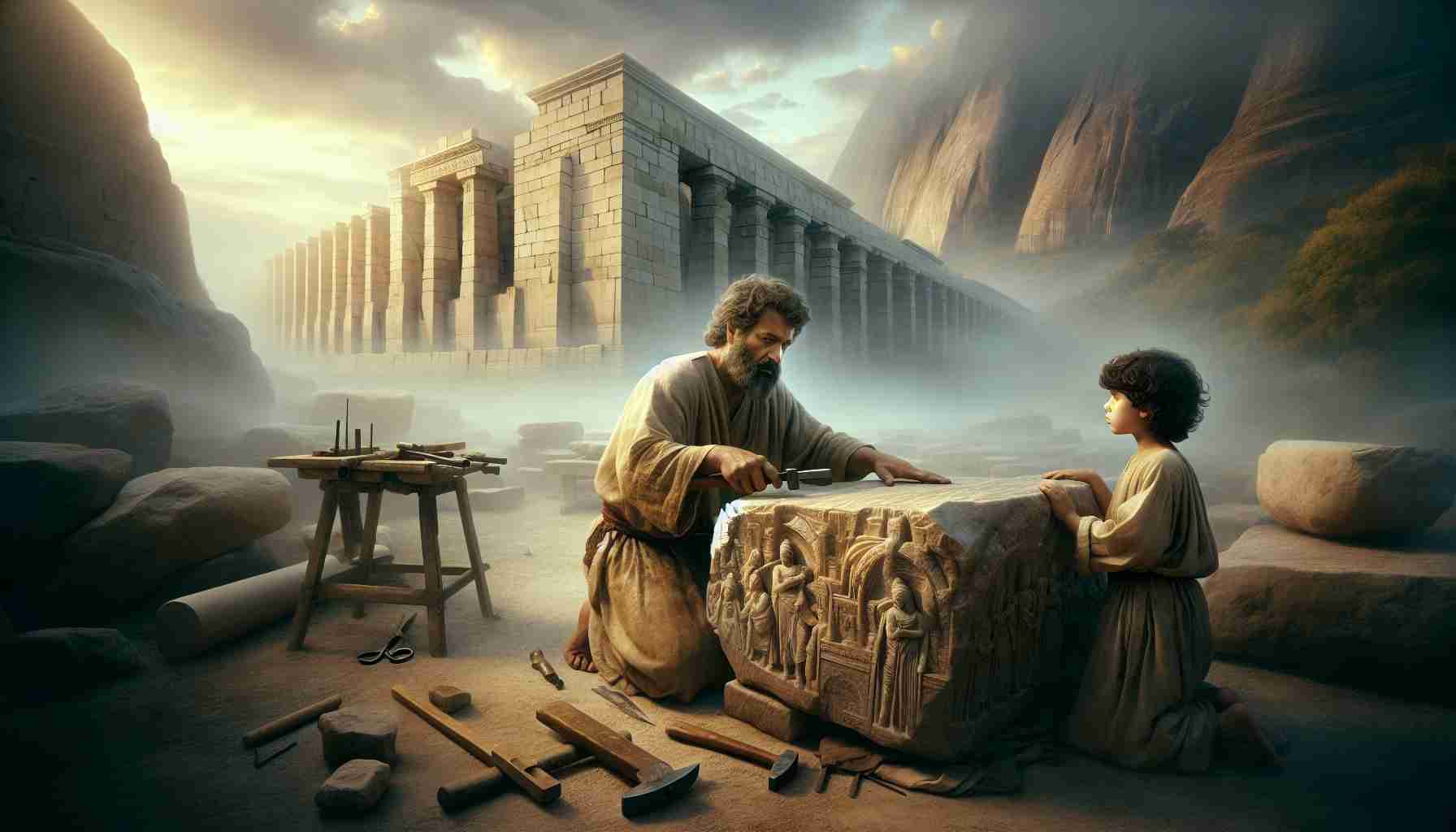

I was a stonecutter during the reign of King Shlomo—Solomon, son of King David. I wasn’t known by name, just another worker in a long line of men with dust on their robes and calluses on their hands. But I helped build the Beit HaMikdash—the Holy Temple in Yerushalayim. And on the day we laid the final stone, I saw what we were truly building.
It started in silence.
That was the rule: no hammer or chisel could be heard on the Temple Mount. Every stone was shaped far from the site, cut to fit perfectly before it ever touched the holy ground. Some said it was out of reverence for Hashem—the name we use to speak of God with awe. Others said it taught us that holiness doesn’t begin with the place. It begins long before.
I spent years shaping those stones. My hands cracked and bled. Still, I felt honored. Men came from every tribe—Yehudah, Naftali, Dan—working side by side. Cedars came floating from Lebanon. Silver, gold, copper arrived in wagons. Even the poorest gave something.
And King Shlomo himself walked among us sometimes. He asked questions. He thanked us. They said his wisdom came straight from Heaven.
One morning, I got to the site early. Fog clung to the hills. My youngest son, Gavriel, had followed me, even though I told him not to.
“I want to see it,” he said. “This is where Hashem will live, right?”
I didn’t know what to say. I was proud. And scared.
Because deep down, I wondered: could something made by human hands ever be holy enough? Could a people like us—flawed, divided—really build a home for God?
That day, the last stone was ready. We had checked it a dozen times. We lifted it in silence. No speeches. Just held breath.
And when it slid into place—clean and perfect, without a sound—I felt something settle inside me. I looked down. Gavriel had tears in his eyes. I think I did too.
Years later, at the dedication, I stood in the crowd as King Shlomo prayed, “May Your eyes be open to this house, day and night.”
That’s when I understood. The Temple wasn’t just stone and cedar. It was built from every offering. Every careful cut. Every quiet hope.
I was only a stonecutter.
But I gave what I had.
And somehow, that was enough.
I was a stonecutter during the reign of King Shlomo—Solomon, son of King David. I wasn’t known by name, just another worker in a long line of men with dust on their robes and calluses on their hands. But I helped build the Beit HaMikdash—the Holy Temple in Yerushalayim. And on the day we laid the final stone, I saw what we were truly building.
It started in silence.
That was the rule: no hammer or chisel could be heard on the Temple Mount. Every stone was shaped far from the site, cut to fit perfectly before it ever touched the holy ground. Some said it was out of reverence for Hashem—the name we use to speak of God with awe. Others said it taught us that holiness doesn’t begin with the place. It begins long before.
I spent years shaping those stones. My hands cracked and bled. Still, I felt honored. Men came from every tribe—Yehudah, Naftali, Dan—working side by side. Cedars came floating from Lebanon. Silver, gold, copper arrived in wagons. Even the poorest gave something.
And King Shlomo himself walked among us sometimes. He asked questions. He thanked us. They said his wisdom came straight from Heaven.
One morning, I got to the site early. Fog clung to the hills. My youngest son, Gavriel, had followed me, even though I told him not to.
“I want to see it,” he said. “This is where Hashem will live, right?”
I didn’t know what to say. I was proud. And scared.
Because deep down, I wondered: could something made by human hands ever be holy enough? Could a people like us—flawed, divided—really build a home for God?
That day, the last stone was ready. We had checked it a dozen times. We lifted it in silence. No speeches. Just held breath.
And when it slid into place—clean and perfect, without a sound—I felt something settle inside me. I looked down. Gavriel had tears in his eyes. I think I did too.
Years later, at the dedication, I stood in the crowd as King Shlomo prayed, “May Your eyes be open to this house, day and night.”
That’s when I understood. The Temple wasn’t just stone and cedar. It was built from every offering. Every careful cut. Every quiet hope.
I was only a stonecutter.
But I gave what I had.
And somehow, that was enough.